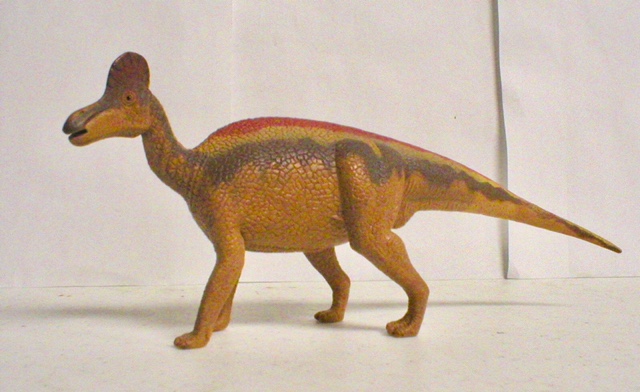Photographs and review by Indohyus, edited by Suspsy
Ankylosaurus seems to capture the imagination of children and adults alike, mainly due to its morphology. Often described as a walking tank, its osteoderms provided a most impressive defence, not to mention the power behind its solid bone club, which could instantly smash the bones of even the most ruthless predators.
Brand: Natural History Museum
Review: Corythosaurus (Natural History Museum by Toyway)

3.3 (11 votes)
Review and photos by Paul Carter, edited by Suspsy
Corythosaurus, the “helmet lizard,” is one of the best-known “duck billed” dinosaurs. Discovered in 1914 in North America by Barnum Brown, it is a lambeosaurine hadrosaur and, like its more famous cousin Parasaurolophus, had a crest that possibly served as a sound chamber that gave the animal a distinctive call.
Corythosaurus, the “helmet lizard,” is one of the best-known “duck billed” dinosaurs. Discovered in 1914 in North America by Barnum Brown, it is a lambeosaurine hadrosaur and, like its more famous cousin Parasaurolophus, had a crest that possibly served as a sound chamber that gave the animal a distinctive call.
Review: Diplodocus (Natural History Museum by Toyway)

3.8 (9 votes)
Here is the 2006 Toyway Diplodocus, ready to tap dance into your hearts, across your living room, and give comedic one timers. Couldn’t you just picture this model walking on stage to an in-studio audience applause and doing an opening monologue. Of course with that smile, it should do some toothpaste commercials as well.
Review: Megalosaurus (Natural History Museum by Toyway)

2.6 (10 votes)
History: 166 million years ago during the middle Jurassic a predator named Megalosaurus prowled England. In 1824 it became the first non-avian dinosaur to have a validly named genus. From there its popularity grew and became a widely known dinosaur celebrity. It received top billing at Crystal Palace Park where it was one of the three mascot dinosaurs.




